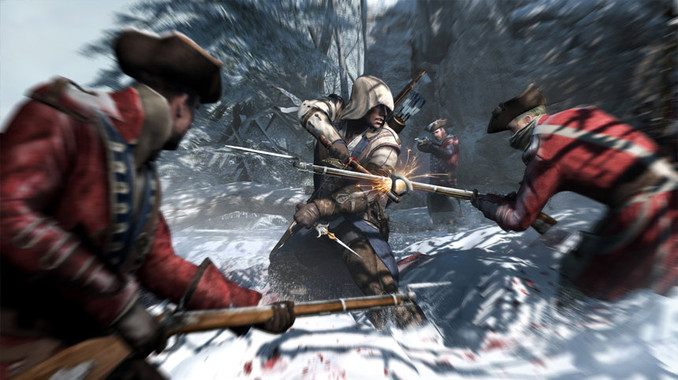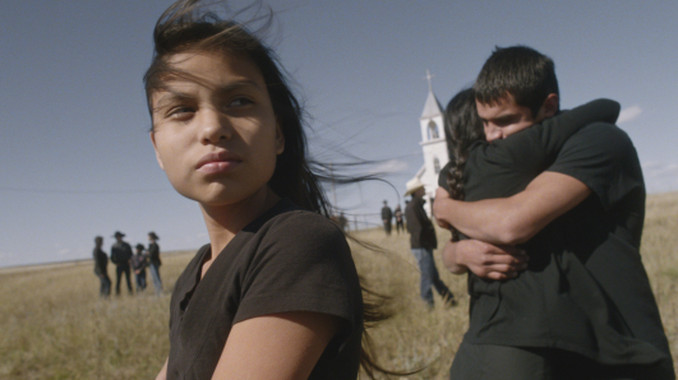What does positive media representation look like?
In theory, positive representation puts an emphasis on a key group of people by holstering them up as role models worth looking up to. In some cases, offering that same group visibility is enough to be considered positive representation. In some sense, both play a part in positive representation, but it is not an exclusive component. If good representation focuses strictly on being positive, then something like, say, 2016’s “Ghostbusters” bolstering an all female-cast would have fared better critically and in theaters, at least to reach the $300 million box office threshold that The Hollywood Reporter suggested the studio needed to break-even.
Clearly, creating positive portrayals isn’t enough to satisfy audiences to project positive representation. However, positive representation isn’t about depicting perfect, lovable, strong characters but, instead, realistic human characters. Positive representation is all about portraying people as they are, no matter how imperfect they may be.
“Wild Indian” is a testament to this idea.
Native Americans had always struggled to receive the proper, respectable representation in Hollywood that, for years, didn’t see them. They were always portrayed as either an afterthought of a background character or an unintelligible stereotype in a headdress. Elon University’s Julia Boyd says it best in her academic article, “Examination of Native Americans in Film and Rise of Native Filmmakers.”
As she goes on to explain, media has used Hollywood movies to perpetuate stereotypes dating back to 16th-century literature, suggesting that Native Americans can only be “the bloodthirsty, raging beast [or] the noble savage. Still, other Indian characters, be they heroines, villains, or neutral, were flat characters with little to no character development or dynamic range in their personalities.”
Such stereotypes were made prevalent in major motion pictures like 1964’s “Cheyenne Autumn,” 1992’s “The Last of the Mohicans” and 2013’s “The Lone Ranger.” Granted, Hollywood has come to terms with these stereotypes, to the point that less weighty depictions like “Dances with Wolves” feel like refreshing milestones, but there’s still work to be done.
The average person may not understand why false depictions of an Indigenous culture could be such a big deal, but the influence of pop culture stretches far outside the reaches of celluloid. Brian Young, a Navajo actor and Yale graduate who has been pressured into playing such depictions of his own culture, wrote for Time about how such depictions directly influenced how his peers saw him, and how it made for a difficult acting career to navigate through.
“I have personally experienced the level of ignorance that results from one’s only exposure to a culture being what one sees in movies,” Young explains. “During my orientation week freshman year in 2006, many of my classmates, when they discovered my Navajo heritage, seemed to think I lived in a teepee and hunted buffalo in the plains on horseback … they wanted to know why I didn’t wear any feathers or have long black hair.”
Furthermore, Young also explains how it can be debilitating for a Native American actor to be forced to play such stereotypes onscreen, thus perpetuating those same ignorant beliefs, when these are the only roles available for people of his background.
“Wild Indian” is a step in the right direction, and not for the reasons some audiences may think.
For those unfamiliar with the relatively new 2021 release, “Wild Indian” focuses on Makwa — later known as Michael — who, with his friend Teddo, covers up and gets away with murder while they’re teenagers. A time jump that advances the plot nearly 30 years into the future showcases how both men have been psychologically tormented by their past as adults, especially as the past suddenly seeps its way into the present.
Both men have deep roots in the Ojibwe Tribe, but they aren’t necessarily defined by their Native American roots. In some sense, specifically for Makwa’s character — who grows into a man who holds substantial prejudices towards other Native Americans because of the abuse that he suffered from his father — those roots attribute greatly to the people whom they become. But their cultural background cannot place them exclusively in a singular box, as so many Native American stereotypes onscreen have done in the past. Because here, they are fully fleshed out, multi-dimensional characters.
There are times in which “Wild Indian” feels almost hyperaware of the damaging media portrayals that have plagued Native Americans for centuries and attempts to turn these stereotypes on their head, to the point that its main character, as an adult, is placed “inside a narrative frame usually reserved for people from other cultures,” as actor Michael Greyeyes explains in a Sundance Film Festival discussion panel.
After escaping the clutches of his father and, ultimately, his reservation, Makwa is a successful businessman. However, he’s remorseless in his approach to maintaining his successes and keeping his past behind closed doors, to the point that he wields a knife to an elderly, bed-ridden woman’s neck in a hospital. Not to mention that Makwa prioritizes his work over his wife and child, and even cheats on his wife in strip clubs.
Meanwhile, although his friend Teddo proceeded to let his inner demons steer him into a 20+ year life of crime in and out of prison, Teddo is no savage, as he is an emotional mess wracked with guilt and remorse.
These aren’t perfect characters, but they are honest portrayals of real people. That is where positive representation stems from.
Representation obviously should never be manifested as a regurgitation of negative stereotypes, but representation also runs a risk of coming off as artificial or manufactured if a group is portrayed in an overwhelmingly positive light.
“Wild Indian” is not only the right amount of representation, but it represents the Native American community better than it has been portrayed onscreen in several years, solely because it allows all of these characters to exist freely as three-dimensional characters without the need for predisposed stereotypes or the need to paint them as overly indulgent, transposed characters.
“There’s a complexity to who we are, where we come from that’s always present, even when we tell personal stories,” Greyeyes explains in the Sundance panel. For years, Native Americans were presented as one-note stock characters. But in “Wild Indian,” their complexity is not only presented front and center, an empathy is presented to make sense of the multi-generational trauma that the Native American people have suffered in a plethora of ways.
That is what makes “Wild Indian” an example of great, positive representation. More movies, especially those trying to represent Native Americans, could learn a thing or two from this movie, which is currently available to rent or purchase on all streaming platforms.
![]()
The content is featured on https://www.directv.com/insider/ is editorial content brought to you by DIRECTV. While some of the programming discussed may now or in the future be available affiliates distribution services, the companies and persons discussed and depicted, and the authors and publishers of licensed content, are not necessarily associated with and do not necessarily endorse DIRECTV. When you click on ads on this site you may be taken to DIRECTV marketing pages that display advertising content. Content sponsored or co-created by programmers is identified as "Sponsored Content" or "Promoted Content."


